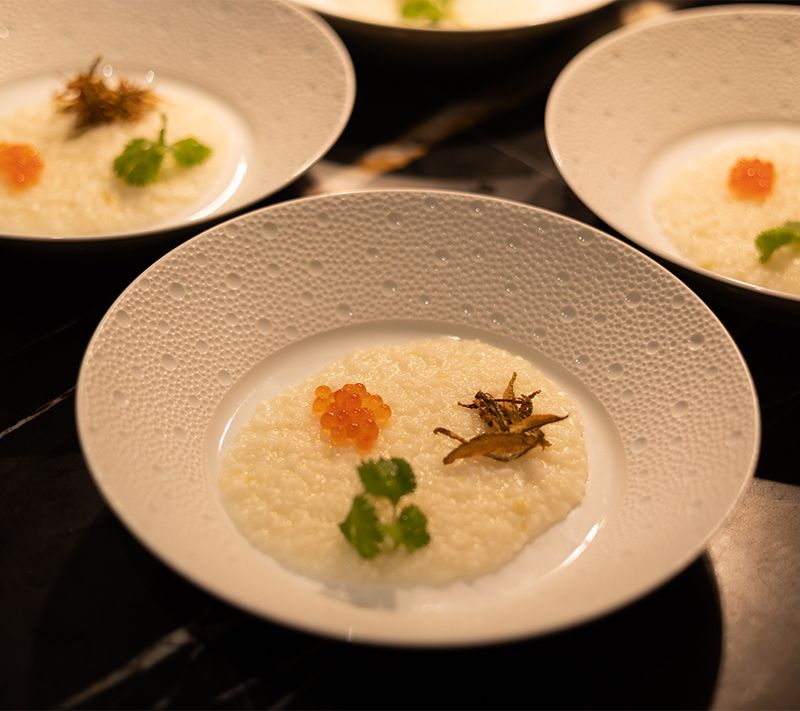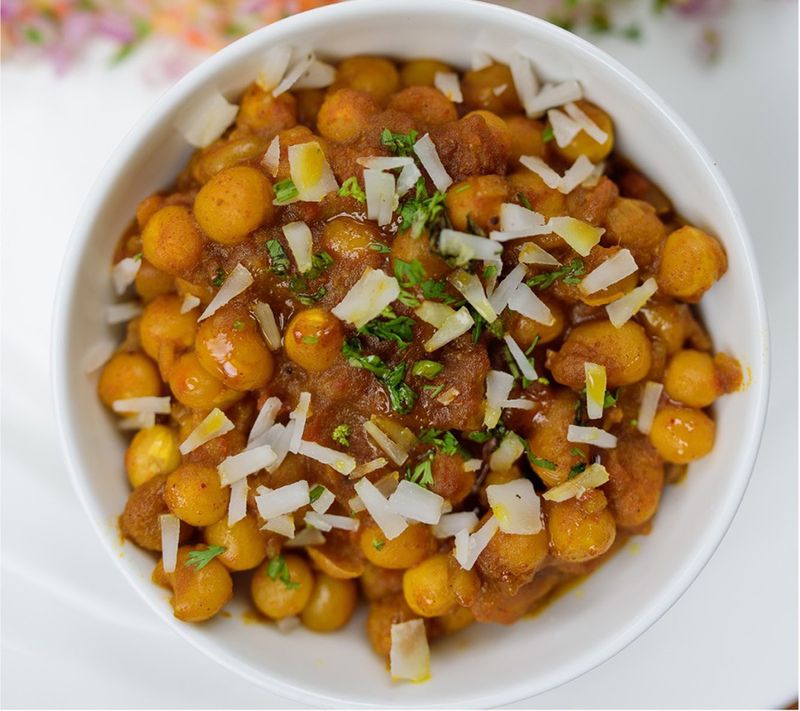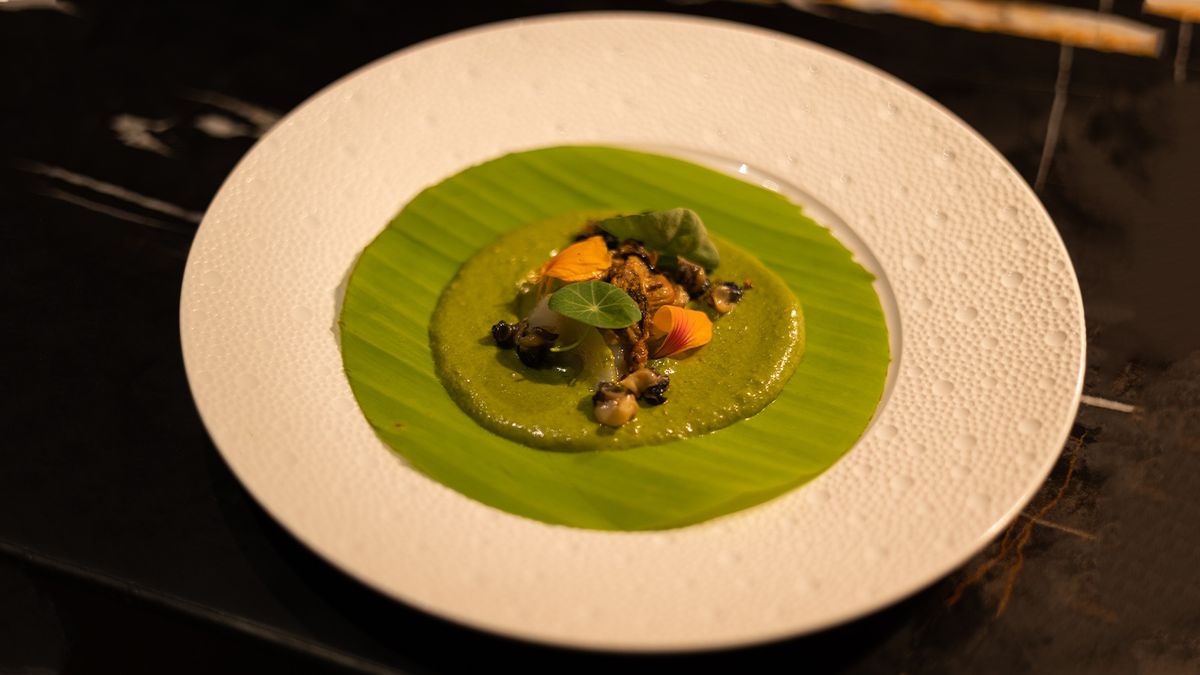In most urban centres, a visit to the bazaar (baajaar in Bengal) is an occasional activity, often earmarked for the weekends. In Kolkata, it is a way of life. The men in every household set out early in the morning to source fresh produce–fruits, vegetables and fish. It is this sacred ritual that dictates the menu on any given day.
“Going to the baajaar every morning is typical Bengali babu culture. Fresh produce is present even today; it has always been a farm-to-table concept,” said Bomti Iyenger, a Kolkata-based art dealer and collector, and culinary host who opens up his colonial home for bespoke home dining. It is this very philosophy that trickles down to restaurants like the Sienna Café and Store in Kolkata. Helmed by Chef Auroni Mookerjee, the outlet started with the hope of showcasing the beautiful bounty of the state’s local bazaar. Ever since its inception, Sienna Café and Store’s commitment to preserving the age-old culinary tradition is visible in everything they do.
An exploration of local flavours

But what makes baajaar so special for Chef Mookerjee that he created a restaurant out of it? The origin of this concept goes back a long way for the former copywriter-turned-chef. His admiration for local markets is rooted in the memories of his grandmother. While Mookerjee was brought up in Delhi, he loved visiting local baajaar in Kolkata with his thakuma, who would patiently find the best produce to cook food at home.
Over the years, his baajaar visits became explorations, with him discovering a soft spot for foraged ingredients. “Every time I enter a baajaar in Kolkata, I find flowers, leaves, herbs, tubers or dozens of varieties of fish. There’s so much diversity not just in produce, but also tradition. You can only compare this to world markets in Singapore or Hong Kong,” he shared. Recently, Delhi got a taste of Mookerjee’s take on Bengali cuisine on the auspicious occasion of Poila Baisakh (Bengali New Year). The brain behind the culinary pop-up, held at the sprawling The Lodhi hotel in the national capital, was Rini Chatterjee of Canary Yellow Media.
With 13 years of experience in food and beverage and a decade in hospitality and F&B PR, Chatterjee was instrumental in bringing to the capital a feast inspired by Bengal’s bountiful bazaars. The carefully curated menu followed a degustation of a typical Bengali meal from teto (bitter) to mishti (sweet).
While much has been said about Bengal and its gastronomic culture, it’s time to demystify the connection between baajaar and its impact on cuisine with the help of culinary experts.
The bounty of baajaars

Bengal’s bazaars hold space for various agricultural practices even today, unlike other towns and cities, revealed Chef Mookerjee. Most vendors in these local markets are villagers who own a small piece of land where they grow a few fruits and vegetables. “The Green Revolution never really came to Bengal in a big way. Monoculture hasn’t been a part of our tradition,” he explained.
Understanding Bengali cuisine is incomplete without a chat with Iti Misra, home chef and food consultant. During our conversation, she pointed out how food was earlier cooked based on the availability of local and seasonal ingredients. It was the markets or baajaar that ruled and influenced the culinary activities of the state. “It was lauki, bhindi, parwal in summer, and cauliflower, cabbage and palak in winter, that was available in the markets. Today, every vegetable and fruit grown in India and abroad can be found throughout the year. Also, with people travelling frequently and watching cookery shows on TV, experimentation with different cuisines has become common,” she reiterated. It isn’t unusual to see broccoli, zucchini and mushrooms being sold in small village bazaars as well. So, the tables have turned and culinary adventurism is influencing the bajaars today.
What’s their favourite bajaar?Chef Auroni Mookerjee: Ranikhet, Uttarakhand; Khar station market, Mumbai; Margao, south Goa Iti Misra: Grand Bazaar, Istanbul; Spice Bazaar, Istanbul; Khan-el-Khaleeli, Cairo; Djemaa El Fna, Marrakesh Bomti Iyengar: Fish markets, Goa; spice markets, Bangkok; fresh vegetable markets in rural areas |
Soft spot for street food and mishti

Chef Mookerjee may have had his fill of kathi rolls in Delhi, but nothing beats the ones available in Kolkata. A close second on his list is kochuri tarkari (deep-fried pastry served with spicy potato curry). There’s no denying that he and his team are heavily inspired by street food, but what is the extent of appropriation that one can really bring about? “We may do an elevated version of a fish fry, which is a traditional tele bhaja (deep fried) that is found everywhere in the city. We’ve never done the phuchka. There are certain things we admire and respect, so we don’t want to get into that territory. The street seller who makes phuchkas is already a master at it,” he revealed.
“For any city to have a vibrant food culture, the street food always has to match, if it's not better than, the food in restaurants or hotels,” pointed out Chef Mookerjee. It’s a similar thought process for Mustard Cafe which currently has an outpost in Goa and plans to open another one in Chennai. Inspired by the use of mustard in its purest forms by both Bengali and French cuisine, the restaurant has brought together the best of the gourmet West and the feast of the East.

On the subject of street food, Punam Singh, co-founder at Mustard, believes street food is best enjoyed on the streets. However, their menu does offer kathi kebabs that are hugely popular among their patrons. They also do a version of Radha Ballavi with aloo tarkari, a Bengali delicacy generally consumed for breakfast. “We try to pick up some bits and pair them with something else that is in tune with a fine dining experience. Another dish that’s in huge demand at Mustard is the cocktail luchi bites with aloo dum,” mentioned Singh.
For Misra, street food is no different from what families cook for snacks or light meals at home. She’s a little picky about hygiene standards, hence she avoids buying from the vendors. “But yes, I do make dahi bada, ghoogni, chila, and kathi rolls at home, generally for a group of people who may visit us,” she said.
Kolkata has a veritable sweet-tooth and the biggest proof is the parar mishti dukaan (neighbourhood sweet shop). Every shop sells a variety of sweetmeats that will make you salivate at first glance. Chef Mookerjee may not have a big sweet tooth, but he loves his kachcha gola and cham cham. “A sweet shop is a mini-baajaar of sorts. It’s a hub in the neighbourhood where everyone goes. What I particularly love about this culture is how every shop takes up that one craft and perfects it. Specialisation is a big theme,” observed Chef Mookerjee.
Looking into the future

On his many explorations, Chef Mookerjee realised that the representation of Bengali cuisine outside Kolkata is a big mismatch. He believes they have only scratched the surface of Bengali cuisine; there’s a world out there to discover.
“We, as a community of Bengali chefs, are not in Kolkata but everywhere else. For all the amazing produce and cuisine we have, it is important that we come back here and do something with it,” he quipped.
There are others, like Misra and Iyenger, who have been offering meal experiences at home to guests, largely foreigners, to help them understand the nuances of Bengali cuisine.
“This is my way of presenting the local cuisine to a worldwide audience. Most of them have never eaten some of the vegetables or the preparations before, as what is known as Indian food overseas is mostly hybrid North Indian plus Mughlai food. Regional and seasonal have been the practice in Bengal for a long time. I cannot claim to preserve Bengali cuisine but through these dining experiences and pop-ups, I have been successful in popularising it,” concluded Misra.



